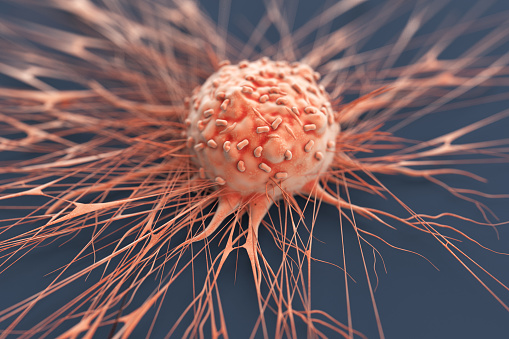What Lactose Intolerance Symptoms | Lactose Intolerance Treatment
Lactose intolerance afflicts hundreds of millions of people, but there are a number of ways to identify and treat this condition, including the use of kefir, apple cider vinegar, chamomile, ginger, and calcium-rich foods, among others. Here are Lactose intolerance symptoms or home treatment.
Lactose Intolerance
Lactose is a type of sugarthat is found in milk, and unfortunately, there are hundreds of millions of people around the world whose bodies simply cannot process or digest this form of sugar. What many people don’t know is that more than 50% of the population has some form of lactose intolerance, but they don’t manifest noticeable symptoms. In fact, in some parts of the world, up to 90% of the population has some level of intolerance or “malabsorption” of lactose. This condition is caused by the lack of a particular enzyme in the body, called lactase, which is necessary for the breakdown and digestion of this sugar.
Most people who suffer mild forms of lactose intolerance can manage the symptoms without completely eliminating dairy or milk products from their diet. The mild indigestion they experience usually causes them to eat dairy slightly less often.
What Lactose Intolerance Symptoms
When people with more intense forms of lactose intolerance consume dairy products that contain milk, they suffer a number of unpleasant gastrointestinal symptoms, including bloating, cramping, constipation, diarrhea, nausea, vomiting or general stomach upset, depending on the severity of the intolerance. Most of these symptoms will occur between 30 minutes and 2 hours following the ingestion of milk or dairy products. Lactose intolerance is usually quite obvious, and doesn’t require extensive testing to prove that the condition exists, but there are certain blood or breath tests that can be conducted to confirm whether you suffer from the condition.
Since dairy products are a primary source of calcium for many people, lactose intolerance can be dangerous, as avoiding dairy products altogether can result in early onset osteoporosis, low bone mineral density, and general bone weakness. Fortunately, there are a number of ways around lactose intolerance, both in terms of dietary alternatives and strategies to strengthen your body’s ability to digest lactose. Now, let’s take a closer look at some of the remedies for lactose intolerance.
Home Treatment For Lactose Intolerance

Home remedies for lactose intolerance include:
Shrink Your Portions
If you have a mile intolerance to lactose, then you can avoid any of the unpleasant symptoms by monitoring your portions. Don’t eat an entire wheel of cheese and then chug a gallon of milk, but don’t be afraid to acclimate your body to small amounts of dairy products, allowing the body to digest the sugar in small chunks, rather than large portions.
Yogurt and Hard Cheese
Yogurt and hard cheeses contain live bacterial cultures, and much lower levels of lactose. In fact, the probiotics in these foods help to break down lactose, so even if you are severely lacking lactase, adding these “dairy” products to your diet can actually improve your body’s ability to digest that pesky sugar.
Educate Yourself
Many people who know that they suffer from lactose intolerance are conscious about their dairy intake, but they very often suffer from the uncomfortable symptoms because they don’t know about the hidden sources of lactose in many different foods. Always check the product labels, and don’t forget that foods like salad dressings, pancakes, candy, hot dogs, soups and frozen dinners often contain lactose that can set your stomach rumbling.
Chamomile Tea
In a similar vein to ginger, chamomile tea has been recommended as a solution for lactose intolerance and other indigestion issues for generations. It can neutralize stomach acid and inflammation, while also soothing the body and mind, helping to reduce the discomfort that occurs if you accidentally (or intentionally) consume lactose.
Milk Substitutes
There are many milk substitutes on the market that don’t contain lactose, but can still deliver the important nutrients that our body needs from milk. From soy milk and almond milk to coconut milk and hemp milk, there are plenty of alternatives to milk, and while they may be slightly more expensive, your stomach will thank you.
Know Your Body
Every person has some level of intolerance to certain foods, so understanding your limitations is key. Over time, if you pay attention, you’ll know the line for your lactose consumption. Perhaps it is a single chocolatebar, two glasses of milk, or a grilled cheese sandwich. Just remember that once you know your body better, you can wisely manipulate your diet to fit within those guidelines.
Consume Lactase
Since lactose intolerance is caused by a deficiency in lactase to break down lactose, adding lactase to your system can be very helpful. You can get lactase enzyme powder and add it to your dairy products (namely milk) and let it digest the sugar before you ever ingest it, or you can take a lactase tablet directly before or after consuming a lactose-containing food.
Ginger
If you simply can’t ignore your need for cheese, you can at least counter the unpleasant side effects. Ginger is an excellent way to settle the stomach, reduce nausea and cramping, and also stimulate more efficient digestion. Ginger ale, pickled ginger, or ginger extract can all be highly effective for keeping your stomach feeling normal, even if you eat a bit too much lactose.
Alternate Nutrient Sources
One of the major dangers of lactose intolerance is the inability of the body to get all the nutrients it needs, namely calcium and vitamin D. Fortunately, you can alter your diet to put more of these nutrients back in to prevent deficiencies. Calcium-rich foods include nuts, seeds, dried fruits, beans, soy products and leafy greens. Vitamin D, on the other hand, can be acquired through fatty fish, beef liver and egg yolks!
Kefir
Kefir is an increasingly popular alternative to cow’s milk, and it does not possess the lactose that makes people sick. In fact, it contains live bacterial cultures (probiotics) that can help to improve the digestive capabilities of the stomach and reduce the symptoms of lactose intolerance, essentially making the body better at digesting that particular sugar.
Apple Cider Vinegar
Many people who suffer from mild to moderate lactose intolerance are able to mask any of the symptoms by adding apple cider vinegar in small amounts to their diet. Apple cider vinegar is able to coat the stomach, improving the digestive efficiency of the gut, and soothe any inflammation or discomfort caused by lactose. These are the bes home treatment for lactose intolerance.






